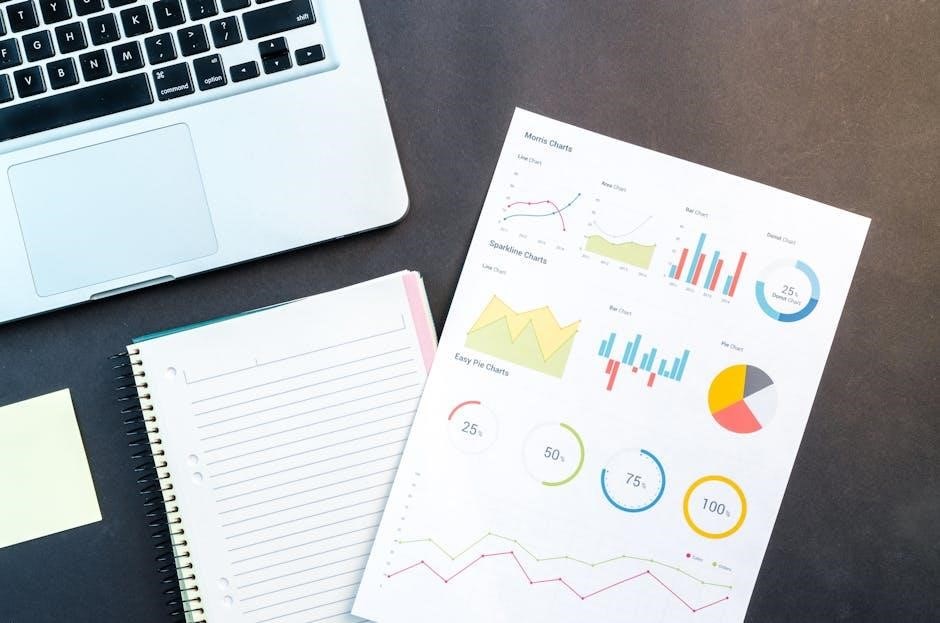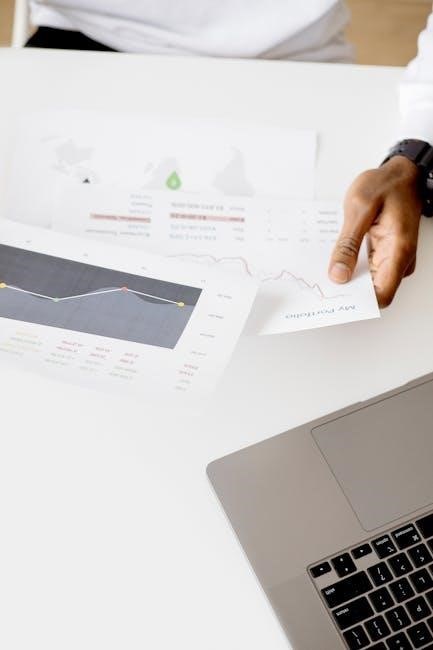Individualized Education Program progress reports provide detailed assessments of student progress towards goals, including academic and functional performance, using templates and examples for effective reporting always online.
Definition and Purpose of IEP Progress Reports
The definition of IEP progress reports is to provide a detailed assessment of a student’s progress towards their goals and objectives outlined in their Individualized Education Program.
The purpose of these reports is to inform parents and IEP team members of the student’s achievement and progress, and to identify areas where the student may need additional support or adjustments to their IEP.
These reports are typically completed by the student’s teacher or service provider, and are used to track the student’s growth and progress over time.
The reports include information on the student’s academic and functional performance, as well as their social and emotional development.
By using IEP progress report examples and templates, educators can ensure that they are providing accurate and comprehensive information about their students’ progress, which can be used to make informed decisions about their education and support.
This information is essential for creating an effective IEP that meets the student’s unique needs and helps them achieve their goals.

Components of an IEP Progress Report
Includes student information, progress metrics, and goal achievement data always.
Achievement and Learning Characteristics
Achievement and learning characteristics are essential components of an IEP progress report, providing a comprehensive overview of a student’s academic and functional abilities. This section should address current levels of knowledge and development in various subject and skill areas, including activities of daily living. The expected rate of progress in acquiring skills and information, as well as the student’s learning style, should also be considered. By including this information, educators and parents can better understand a student’s strengths and weaknesses, and develop targeted strategies to support their growth and development. Additionally, this section can inform the development of goals and objectives, ensuring that they are tailored to the student’s unique needs and abilities. Effective reporting of achievement and learning characteristics is critical to creating a comprehensive and effective IEP progress report, and should be based on data from all relevant sources.
Present Levels of Academic Achievement and Functional Performance
The present levels of academic achievement and functional performance section provides a comprehensive summary of a student’s current abilities and skills. This section should include data from various sources, such as parents, teachers, and assessments, to provide a well-rounded understanding of the student’s strengths and weaknesses. The information gathered in this section is used to inform the development of goals and objectives, and to determine the most effective instructional strategies. By including a detailed description of the student’s current academic and functional abilities, educators and parents can develop a clear understanding of the student’s needs and develop targeted support strategies. This section is a critical component of an IEP progress report, and should be updated regularly to reflect changes in the student’s abilities and progress. Effective reporting of present levels is essential to creating a comprehensive IEP progress report.

Writing an IEP Progress Report
Writing involves creating a detailed document using templates and examples to track student progress and goals effectively online always.
Setting Goals and Objectives
Setting goals and objectives is a crucial step in creating an IEP progress report, as it helps to establish a clear direction for the student’s education and provides a framework for measuring progress. This involves identifying specific, measurable, and achievable goals that are tailored to the individual student’s needs and abilities. The goals and objectives should be aligned with the student’s strengths, weaknesses, and learning style, and should be designed to help the student make progress towards meeting their full potential. By setting clear and achievable goals, educators can help students stay focused and motivated, and can provide a sense of accomplishment and pride as they work towards meeting their objectives. Effective goal-setting also involves ongoing monitoring and assessment to ensure that the student is making progress towards meeting their goals, and making adjustments as needed to stay on track.
Assessing Progress and Providing Feedback
Assessing progress and providing feedback is an essential part of the IEP process, as it helps to ensure that students are meeting their goals and objectives. This involves regularly collecting and analyzing data on student performance, using a variety of assessment tools and methods. The feedback provided should be specific, timely, and constructive, and should be designed to help students understand their strengths and weaknesses. By providing regular feedback, educators can help students stay on track and make adjustments as needed to ensure that they are meeting their full potential. Ongoing assessment and feedback also helps to identify areas where students may need additional support or accommodations, and can inform instruction and intervention strategies. Regular progress assessments and feedback sessions are critical to ensuring that students receive the support they need to succeed. Effective feedback is key to student success.

Examples of IEP Progress Reports
Various examples of IEP progress reports are available online for different grade levels and needs always using templates and examples for effective reporting purposes only.
Sample IEP Progress Report for a 10th Grade Student
A sample IEP progress report for a 10th grade student would include sections for current progress, goals, and objectives, as well as a summary of accomplishments and areas for improvement.
The report would provide a comprehensive overview of the student’s academic and functional performance, including strengths and weaknesses.
It would also outline the strategies and interventions used to support the student’s progress, and provide recommendations for future instruction and support.
The report would be used to inform instruction and make data-driven decisions about the student’s IEP, and would be shared with parents and other IEP team members.
The sample report would demonstrate how to effectively track and report student progress, and provide a model for creating comprehensive and informative IEP progress reports.
It would be an essential tool for educators and families working together to support student success.
The report would be tailored to meet the individual needs of the student, and would be used to celebrate successes and identify areas for growth.
Overall, the sample IEP progress report would be a valuable resource for anyone involved in supporting the education and development of students with diverse needs.
Using Templates to Create Comprehensive IEP Progress Reports
Using templates to create comprehensive IEP progress reports can help streamline the reporting process and ensure that all necessary information is included.
Templates can be found online or created in-house, and can be tailored to meet the specific needs of individual students or schools.
The use of templates can also help to reduce the time and effort required to create reports, allowing educators to focus on supporting student progress.
Templates can include sections for student information, progress towards goals, and recommendations for future instruction.
They can also include space for graphs, charts, and other visual aids to help illustrate student progress.
By using templates, educators can create comprehensive and informative IEP progress reports that effectively communicate student progress and support data-driven decision making.
Overall, using templates can be a helpful tool for creating high-quality IEP progress reports that meet the needs of students, families, and educators.
This approach can help ensure consistency and accuracy in reporting.

Best Practices for Writing IEP Progress Reports
IEP progress reports should be clear, concise, and data-driven, using specific examples and language always online effectively.
Communicating with Parents and IEP Team Members
Effective communication is crucial when working with parents and IEP team members, using clear and concise language to ensure everyone is informed and involved in the process.
The IEP progress report should be shared with parents and team members, providing opportunities for discussion and feedback, and using templates and examples to facilitate communication.
Regular updates and progress reports help to build trust and collaboration, and using online resources and tools can enhance communication and make it more efficient.
By working together and sharing information, parents and team members can support the student’s progress and help to achieve their goals, using IEP progress report examples and templates to guide the process.
Clear communication and collaboration are essential for creating a supportive and effective IEP team, and using online resources can help to facilitate this process, always online and available.
Tracking Student Growth and Progress
Tracking student growth and progress is a critical component of the IEP process, using data and assessments to inform instruction and make adjustments as needed.
The IEP progress report provides a snapshot of the student’s progress towards their goals, using metrics and benchmarks to measure growth.
By regularly tracking and monitoring student progress, teachers and IEP team members can identify areas of strength and weakness, and make data-driven decisions to support the student’s learning.
Using online tools and resources, such as progress report templates and examples, can help to streamline the process and make it more efficient.
Regular progress monitoring and tracking helps to ensure that the student is on track to meet their goals, and makes it possible to make adjustments and interventions as needed to support their growth and progress always online.